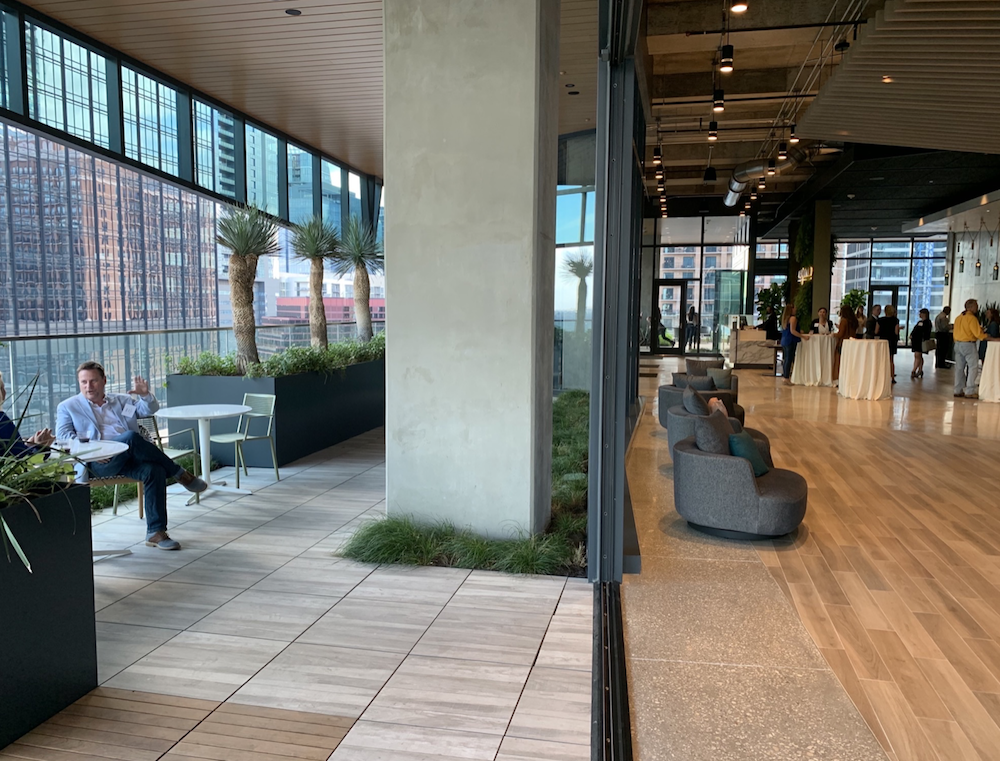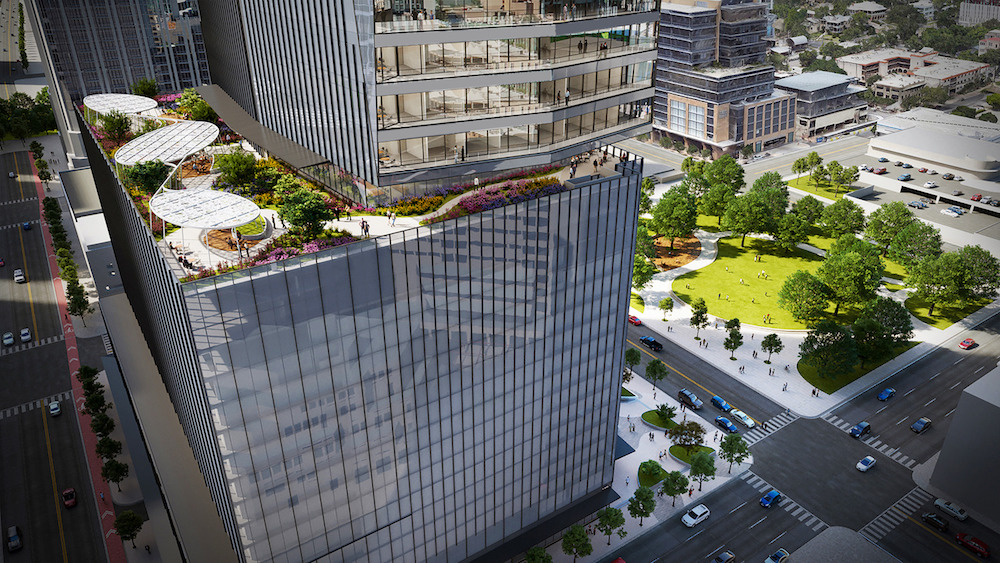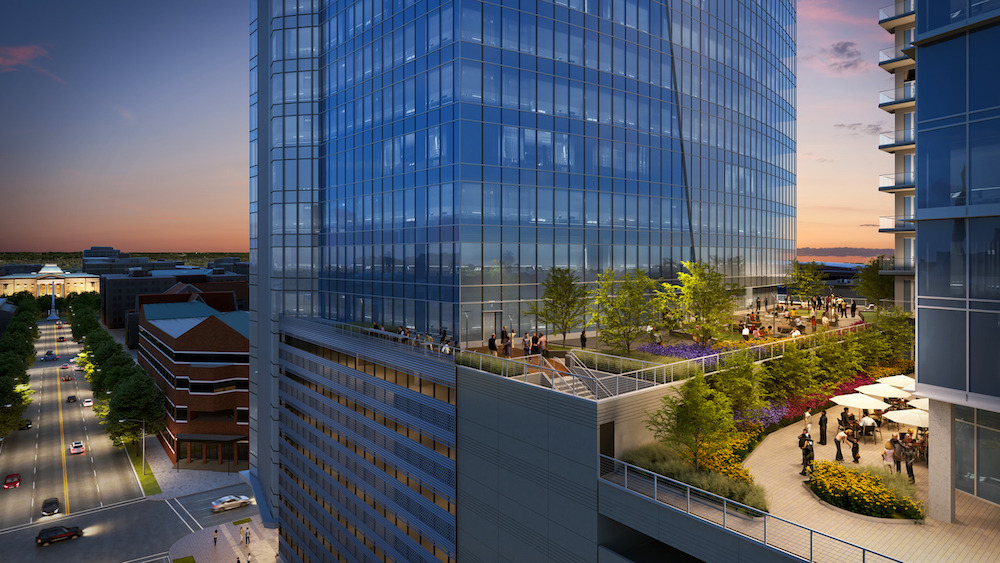Turan Duda and Jay Smith of Duda|Paine share why we will see more multifaceted outdoor workspaces in 2022.
– Stay tuned as we share more 2022 workplaces trends for the entire month of December –

Looking to 2022, businesses and organizations continue to seek to add outdoor workspace features to their work environment. Well-appointed exterior amenities, including rooftop terraces and balconies, have become more prevalent. They are also evolving, with growing awareness that one-size does not fit all. Nevertheless, we have found that once companies and their employees start to extend their workplace outdoors, the flexibility and rejuvenation these spaces provide make them sought after amenities. Aside from fresh air and views, the ability to be outdoors appeals to all the senses, from sounds of nature such as birdsongs to feeling a refreshing breeze. They also can provide optimal environments for strengthening relationships between coworkers and advancing common purpose in the workplace.
Features & Benefits
Whether an exterior space is a two-story balcony, a rooftop terrace, or an inhabitable garden, successful outdoor workspace includes features found in indoor office environments. Indoors or outdoors, today’s employees are accustomed to working from their couch or backyard patio, so they desire alternative spots to accomplish their tasks, take a break, or meet and collaborate in fresh air. Flexibility and variety are essential, beginning with options for both collective and individualized exterior space. The Republic, a new development coming to Austin, Texas, includes multiple outdoor options from a public ground level green plaza shared with the city, a main podium level green space for all building users, a terrace for every office tenant floor on one end of the building, and an upper-level executive amenity. Diverse, moveable, and clustered furnishings help facilitate flexible options. Power access and strong WiFi infrastructure are essentials.
The most prolific type of outdoor space is the multi-tenant amenity terrace, which allows people from individualized office floors to access the outdoors for individual focus and meetings as well as other work- or social-related events. The functionality of these spaces has expanded to accommodate alternative work, connecting, meeting, conference, collaboration, event, and dining venues. The challenge is to make an exterior amenity feel large enough and unified while being human scaled. This is best accomplished by supporting more intimately scaled areas around the periphery and along the terrace’s circulation patterns.

Negotiating Climate
We’ve integrated thousands of square feet of inhabitable, flexible exterior space for office clients. These amenities present companies the potential to improve users’ sense of wellbeing. To make outdoor spaces appealing and ensure their comfort requires careful consideration of climate and building orientation. We conduct sun and wind studies, which allow designers to ensure exterior space is usable across seasons. Sun and wind are the baseline measures of success. Other features that foster habitability such as fire pits, fire bars, and heaters can also facilitate year-round use. Plantings and shade trees reduce heat island effect, control sound transmission, and provide cover from the sun. Shade structures shelter individual spaces and group meeting zones. Covered spaces allow use during a rain shower. Higher railings, windbreak configurations, and step-backs from a building’s edge improve users’ sense of safety and reduce wind in tower garden terraces.
Reclaiming & Connecting
Many outdoor workspaces are part of a complex that includes conference, fitness facilities, and event space, transforming what was once seen as low-use space, such as the roof of a parking deck, into sought after amenities. At 405 Colorado, also in Austin, a wraparound terrace offers indoor and outdoor amenities. In good weather, fold-away doors on two sides allow the level to be fully open to the outdoors. Terrace spaces can also provide opportunities to give back to communities by allowing public use, as is planned via ground level parks at both The Republic and Weststar Tower in El Paso, Texas.

A new evolution in the design of outdoor workspace is as a connector between office, residential, and mixed-use functions. At 301/327 Hillsborough Street in Raleigh, North Carolina, an 11,00 square foot terrace includes green space situated atop lower-level retail and parking structures to connect an office tower with high-rise residences. The exterior space can host large events for either building or draw in the surrounding community when desired. The model also allows for shared amenities, parking, and base infrastructure. In turn, these multi-use developments activate a neighborhood or urban district.
The goal of clients and designers should be to increase the function and use of outdoor spaces by accommodating everything from meetings, events, individual work, and respite to bring together office tenants and their neighbors. After nearly two years of isolation, people long for connectivity in their daily routine, both to each other and the outdoors. We can accomplish both with well-designed exterior spaces.
Intangibles
Aside from the practical reasons for adding outdoor workspaces to office designs, in collaboration with our clients we advocate for the intangible benefits of these spaces. In the southeast and other parts of the country, outdoor space can be used and enjoyed during any season. When the weather prevents occupancy, building users gain benefits from the direct connection to nature provided by views to green terraces and gardens. Our ability to couple outdoor space that functions like the indoors and indoor space that connects people to the outside makes built green space valuable year-round. Garden features, and the ability to see them from within a building, also make the office a more inviting place to be.

